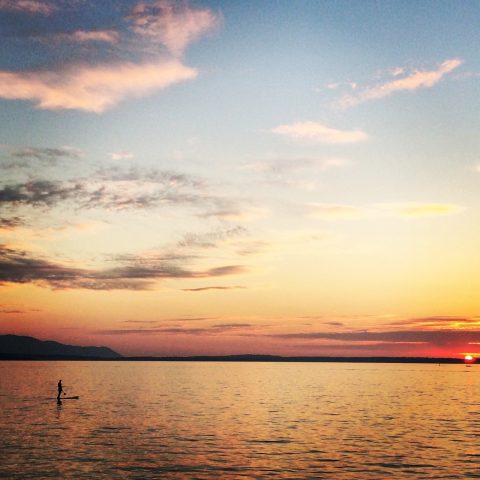
05.16.17
Washington Surfrider Chapters Launch Citizen Science Partnership with Dept. of Natural Resources for Ocean Acidification Monitoring
By Gus GatesThe Northwest Straits, South Sound, and Capitol Chapters recently launched a partnership with the Aquatic Assessment & Monitoring Team (AAMT) at the Washington Department of Natural Resources to serve as Site Guardians for ocean acidification monitoring stations. This collaborative effort is a hands on way for citizen scientists to get actively involved in some of the research happening within their local waters.
 Peter Markos and Micah Horwith with the Washington Department of Natural Resources deploying an ocean acidification monitoring sensor.
Peter Markos and Micah Horwith with the Washington Department of Natural Resources deploying an ocean acidification monitoring sensor.
Background on the DNR Research:
Shellfish are vital to recreation, culture, and economic activity in Washington State, but they are likely to suffer as our oceans become more acidic. Our oceans absorb roughly one-third of the carbon dioxide produced by humans, and this absorption is making our local marine waters more acidic. Laboratory studies show that shellfish are most sensitive to changes in water chemistry in early life when they are microscopic larvae. AAMT has partnered in research efforts with local Universities to develop a better understanding of the impacts ocean acidity has on one of our important local resources, shellfish. The following questions were asked for this research:
- Are shellfish larvae abundant in eelgrass habitat?
- Can eelgrass photosynthesis counteract ocean acidification?
- Can eelgrass enhance shellfish growth and reduce stress from the environment?
- Can eelgrass improve shellfish growth and pH in a halo around the meadow?
Do the impacts of ocean acidification vary in Puget Sound and along Washington’s coast? That is one of the questions the Washington State Department of Natural Resources’ Acidification Nearshore Monitoring Net- work (ANeMoNe) aims to answer. ANeMoNe is a network of sensors placed around Puget Sound and along the Pacific coast to measure local variations of marine chemistry. This data can be used to evaluate site-specific variability in pH, assess impacts on marine organisms and identify potential sites that may be more exposed or buffered to changes in marine chemistry. Read more about the what and where of ANeMoNe monitoring.
 These sensors take measurements every 10 minutes for: pH, salinity, temperature, dissolved oxygen, and chlorophyll. Every 6 months: alkalinity
These sensors take measurements every 10 minutes for: pH, salinity, temperature, dissolved oxygen, and chlorophyll. Every 6 months: alkalinity
The Surfrider Connection:
The concept of launching this partnership started last Summer with a phone call from a DNR staff member after they read a blog post about some of the great work that Oregon Surfrider Chapters were doing in partnership with Oregon State University at some of the marine reserve sites along the Oregon Coast. Surfrider has actively promoted citizen science efforts for many years through our volunteer led Blue Water Task Force monitoring program, and in many ways expanding monitoring efforts to include parameters for ocean acidification is a logical extension of this program. There are many ways that Surfrider is actively working to address the challenges that we face with ocean acidification, including our representation of recreational ocean users on the Washington Marine Resources Advisory Council (MRAC).
How Can I get Involved?
Learn more about some of the volunteer monitoring opportunities with DNR AAMT, or contact Washington Field Manager Brice Boland if you would like to get involved in monitoring efforts with your local chapter.
 We're all in this leaking canoe together in our efforts to address climate impacts like OA...that's why collaboration is key. Huge thanks to Ken Cambell and Citizens for a Healthy Bay for taking the crew out to the Maury Island site for a recent sensor deployment.
We're all in this leaking canoe together in our efforts to address climate impacts like OA...that's why collaboration is key. Huge thanks to Ken Cambell and Citizens for a Healthy Bay for taking the crew out to the Maury Island site for a recent sensor deployment.
2017 Washington Ocean Acidification Symposium
The Washington Ocean Acidification Center invites you to attend our Science Symposium on 22 May 2017 at the University of Washington Center for Urban Horticulture in Seattle, WA.
This day-long symposium will consist of invited presentations from regional experts. Presentations will focus on new results from research relevant to ocean acidification in Washington waters, including field observations, biological experiments and modeling. Presentations will be followed by plenary discussions. Attendance is free, registration is required.

